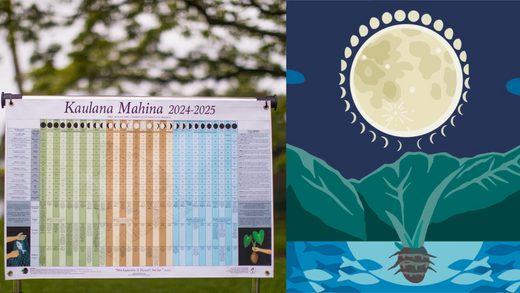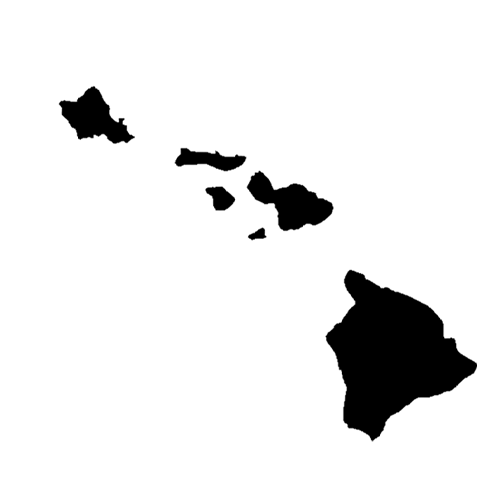TD;LR: Learning about the Hawaiian Moon Calendar gives insights into sustainable practices passed down from kūpuna, guiding the best times for fishing, farming, and other resource management through its phases. Haunani Miyasato’s work brings this knowledge into the modern world, showing how aligning with the moon phases can foster a deeper connection to the ʻāina.
From guiding agricultural practices to influencing fishing schedules, the lunar cycles are deeply interwoven with the traditions and beliefs of the Hawaiian people.
Hawaiʻi’s moon calendar is built around a 29.5-day cycle, divided into three ten-day periods known as anahulu. Each phase–Hoʻonui (rising), Poepoe (full), and Emi (diminishing)–offers insight into the best times for various activities, reflecting the moonʻs powerful influence on daily life.
- Hoʻonui (rising): This phase is considered excellent for fishing, especially in the first half of the anahulu. It’s a time of abundance, ideal for met fishing and lamalama (torching). As the phase progresses, fishing tends to slow down, signaling a period of reset.
- Poepoe (full): The full moon is a time of celebration and plenty. Fishing during this phase is often produced, both near shore and in deeper waters, embodying the spirit of abundance. The full moon encourages community gatherings and rituals.
- Emi (diminishing): The first half of this phase may bring poor fishing results, but the latter half can provide good opportunities for night fishing and deeper sea excursions. This understanding of lunar cycles reflects the importance of timing in managing natural resources.

For generations, Native Hawaiians have relied on the moon’s predictable patterns to navigate agricultural and fishing practices. The lunar calendar served as a dependable source of information crucial for survival, dictating not only when to plant and harvest but also when to let fishing grounds and gardens rest.
Creating the Hawaiian Language Moon Calendar
Today, the rich traditions surrounding the moon continue to thrive. Resources like the Hawaiian language moon calendar created by Haunani Miyasato, offer a modern way to engage with these cycles. Haunani’s inspiration for her creation stems from her journey as a mom of four children in a Hawaiian immersion school while also learning ʻōlelo Hawaiʻi herself. The roots of this idea trace back further to her college days, where she took a class called Nohona Kaulana Mahina, taught by Henani Enos at Ka Haka ʻUla O Keʻelikōlani. The class, taught entirely in Hawaiian, initially felt overwhelming, but she stuck with it. Inspired by what she learned, she saw the potential to uplift these teachings by turning her newfound knowledge into a learning tool for her family and friends–“the moon calendar became a way for me to deepen my knowledge of ʻōlelo Hawaiʻi while teaching my children.”
Path to Sustainability
Haunani also highlights how the moon and its phases tie back to the ʻāina, and that “the calendar serves as a reminder that our actions, rhythms, and lives are interconnected with the ʻāina.” As our kūpuna have understood, timing is everything–the ʻāina, the tides, the moon, and their connection to one another. In today’s world of convenience, we have often lost touch with the natural rhythms of the seasons. I asked Haunani about her hopes in bridging the sustainability aspect back to the Hawaiʻi community. She shares that “by learning from the calendar, we can adapt these traditional practices to modern life, finding ways to live more sustainably, honor the rhythms of the ʻāina, and make choices that support our environment and well-being.”
Haunani’s Creative Journey Continues

Haunani’s first creation, a Hawaiian Language Moon Calendar, was born from her desire to share Hawaiian knowledge. Written entirely in ʻōlelo Hawaiʻi, the calendar has garnered requests for translations. However, Haunani chose to preserve the poster’s integrity by keeping it fully in Hawaiian, ensuring the design remains clean and uncluttered. To address the translation needs, she developed the Kāleka Pō Mahina, or moon phase cards. “Each card focuses on a single moon phase, with the same information from the calendar–details about fishing, farming, and moon features–on the back,” she explains.
Her creative journey didn’t stop there. Recognizing the need for sustainable tools in preschool classrooms, she designed the ʻAlemanaka Kumu. This resource, tailored to younger learners, provides teachers with an engaging way to introduce the moon phases to children, fostering early connections to Hawaiian traditions.

Building on her mission to spread this knowledge, Haunani also launched Mahina Workshops. Through these sessions, she visits schools and organizations to teach educators about the moon from a Hawaiian perspective. “These workshops empower teachers to integrate this knowledge into their curriculum and classrooms,” she shares, furthering her vision of connecting communities to the wisdom of their kūpuna.


Written by: Courtney Mann



